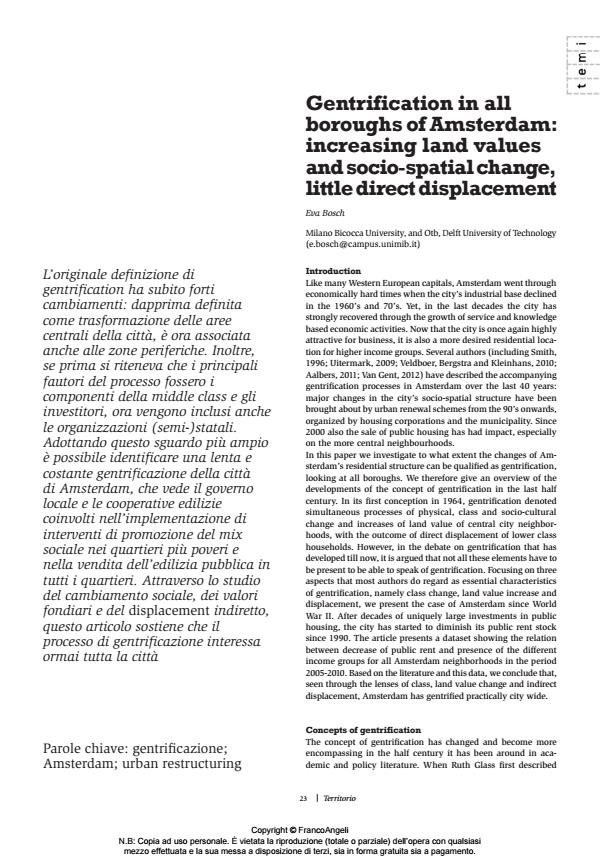Gentrification in all boroughs of Amsterdam: increasing land values and socio-spatial change, little direct displacement
Titolo Rivista TERRITORIO
Autori/Curatori Eva Bosch
Anno di pubblicazione 2015 Fascicolo 2015/73
Lingua Italiano Numero pagine 7 P. 23-29 Dimensione file 248 KB
DOI 10.3280/TR2015-073004
Il DOI è il codice a barre della proprietà intellettuale: per saperne di più
clicca qui
Qui sotto puoi vedere in anteprima la prima pagina di questo articolo.
Se questo articolo ti interessa, lo puoi acquistare (e scaricare in formato pdf) seguendo le facili indicazioni per acquistare il download credit. Acquista Download Credits per scaricare questo Articolo in formato PDF

FrancoAngeli è membro della Publishers International Linking Association, Inc (PILA)associazione indipendente e non profit per facilitare (attraverso i servizi tecnologici implementati da CrossRef.org) l’accesso degli studiosi ai contenuti digitali nelle pubblicazioni professionali e scientifiche
L’originale definizione di gentrification ha subito forti cambiamenti: dapprima definita come trasformazione delle aree centrali della città, è ora associata anche alle zone periferiche. Inoltre, se prima si riteneva che i principali fautori del processo fossero i componenti della middle class e gli investitori, ora vengono inclusi anche le organizzazioni (semi-)statali. Adottando questo sguardo più ampio è possibile identificare una lenta e costante gentrificazione della città di Amsterdam, che vede il governo locale e le cooperative edilizie coinvolti nell’implementazione di interventi di promozione del mix sociale nei quartieri più poveri e nella vendita dell’edilizia pubblica in tutti i quartieri. Attraverso lo studio del cambiamento sociale, dei valori fondiari e del displacement indiretto, questo articolo sostiene che il processo di gentrificazione interessa ormai tutta la città
Parole chiave:Gentrificazione; Amsterdam; urban restructuring
- Applying machine learning to analyze the key features of transit-oriented gentrification - A case study of Taipei metropolitan area Tzu-Ling Chen, Pei-Chen Chang, in Cities 106195/2025 pp.106195
DOI: 10.1016/j.cities.2025.106195
Eva Bosch, Gentrification in all boroughs of Amsterdam: increasing land values and socio-spatial change, little direct displacement in "TERRITORIO" 73/2015, pp 23-29, DOI: 10.3280/TR2015-073004